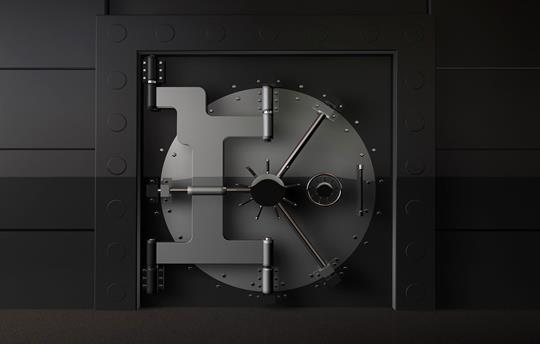The Labels Strategy Behind Layering Covert Security Features
1/20/2021 Stan Chess

Counterfeiting is a problem no company likes to think about, but it is not something you can ignore. From defense equipment to watches, counterfeiting globally was projected in the Research And Markets' “The Global Brand Counterfeiting Report, 2018” to reach $1.82 trillion by 2020.
What’s your strategy when it comes to a label’s security features? That’s an important question, and it’s one that doesn’t lend itself to any easy answers. A good rule of thumb is to start with simple and low-cost security options, work your way up from there, and try to include at least two to three different features at once.
Engineers, looking for more insight on durables?
Get to know RRD's 2021 Industrial Labels Toolkit.
To stay one step ahead of counterfeiters, consider these best practices (all gleaned from a department that has over 50 years of experience in developing and printing security features).
Layer technologies
Multiple layers of security stand the best chance of deterring counterfeiting. I mean “layering” both figuratively and literally.
Today, one security feature is no longer enough when it comes to industrial labels, no matter what your product is. However, the size, material, and use of your products may limit which security features you are able to use. Regardless, always use more than one feature whenever possible.
The types of security features available to you are abundant:
- Material-based security includes tamper-evident or destructible material, voidable adhesives, and retro-reflective materials.
- Print-based security includes microlines (miniature text that appears as a solid line or image) or hot/cold foil printing.
- Ink-based security includes ink that is color-shifting, penetrating, thermochromic, visible or invisible, UV fluorescent, and pen- or rub-activated.
Digital security includes consecutive and variable numbering or QR codes, icons, and taggants (see explanation below), which are nano-sized forensic fingerprints that must be read with a scanner.
Taggants are applicable anywhere in your supply chain to verify authenticity. They can be used in invisible inks and, when printed, are completely undetectable. The only way to read the information on a taggant (not just recognize its presence) is with a custom reader.
This means this security feature creates no visible change to the label. Now when counterfeiters buy or steal your products to replicate them, they have no reason to remove, alter, or destroy the labels.
Interchange overt, covert, and forensic methods
If counterfeiters can copy one overt feature, they can copy another. By combining overt and covert features you can increase the complexity of counterfeiting exponentially.
- Overt features are visible to the eye, and the lowest cost. They allow authentication without the need for a special tool, like a hologram.
- Covert features are hidden in the product. These can be detected by low-cost tools depending on the feature.
Here’s a quick example of the two working together through the use of a QR code:
We commonly execute QR codes that contain overt and covert features. In this process, we print icons that can be read by an app (so the printed icon cannot be copied). We also incorporate special inks that can only be seen when rubbed with a special pen, and invisible fluorescent inks printed with an image that can only be read with a black light.
There are also forensic features that are undetectable and can only be authenticated by specially-equipped labs. Products with forensic security are uniquely encoded and useful for high-value products and as evidence admissible in court.
Modify the product design often
Of course, security isn’t just about the features. It’s about making your product hard to replicate. Changing the design of your security features allows you to preempt any counterfeiters close to replicating your product. Change the design often by switching inks, microline words, or location.
Access your copy of RRD's 2021 Industrial Labels Toolkit.
For example, birth certificates always have a microline security feature around the border, and unless you look very closely, you would never notice that just one of the words is misspelled. This word, and its location, is changed every few years to stay ahead of fake certificates.
No matter how advanced your security, fakes can catch up. Which is why every label should be designed from the beginning with security in mind. It’s essential.
Stan Chess is the Applications Engineer for Form and Label, Pressure Seal and Printed Security, RRD Label Solutions.